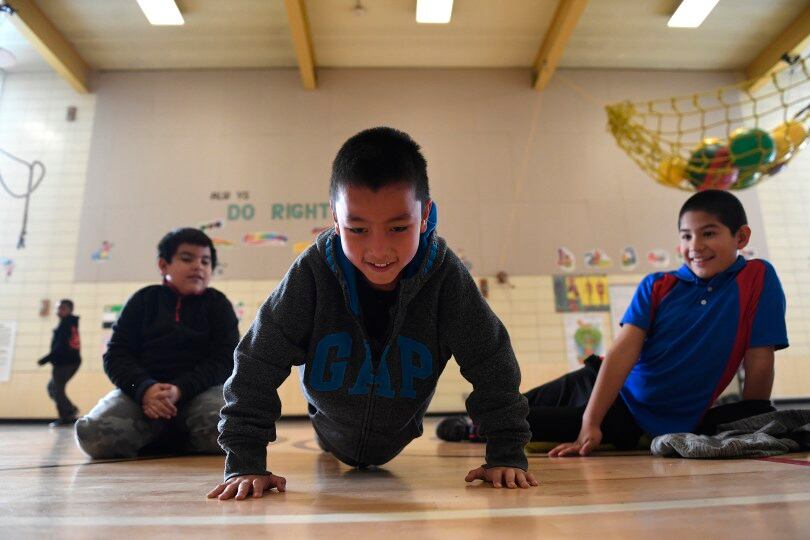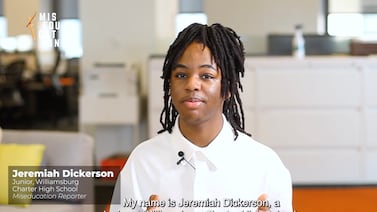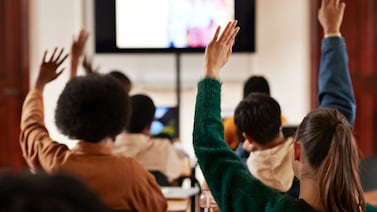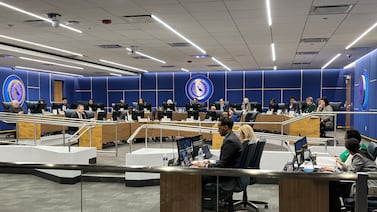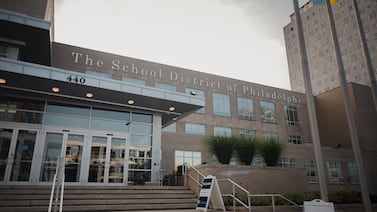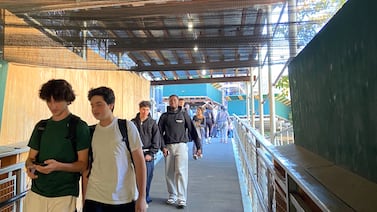Two Aurora schools could close at the end of this school year and a third would stop accepting sixth graders, if the school board approves new recommendations.
The recommendations to close Lyn Knoll Elementary and turn Century Elementary and South Middle School into remote learning centers will be discussed with the community in meetings over the next few weeks. The school board, which has not always seen eye-to-eye with district administrators on long-range planning, will be asked to approve the recommendations in January.
The closures come as part of the district’s Blueprint plan, a three-year process to create a long-term facilities plan to accommodate the district’s shifting enrollment. In looking at facilities, Blueprint also considers education models, using specialized programming in different regions of the district to drive school site decisions.
For years, enrollment has declined in Aurora Public Schools, but this year the drop accelerated, and required the district to speed up some of the work. Complicating things, eastern Aurora is growing rapidly with currently more than a dozen housing development projects that have proceeded despite the pandemic. The district is planning to build new schools to address expected student growth in those areas.
Citing the pandemic, the district has delayed the Blueprint work a few months, resulting in a shorter time period between an expected board vote and the school closures. Research has shown that school closures can negatively impact students, but Munn said that research has not been done on school closures during a pandemic.
“We know there’s no good time for those kinds of major transitions,” Munn said. “I’m not sure if students are currently in the space they would be as far as their connection, their bond to the school. I’m not saying this is a net positive, I’m just saying we know some of the things we typically assume and think about around closure are different now.”
But equity has been at the forefront of the work, Munn said. All together, he pointed out, the recommendations represent an $80 million investment in western Aurora, the city’s more impoverished area. At least one board member has pushed on the idea that new schools should not be limited to the growing parts of east Aurora, where families tend to have higher incomes.
Next, district officials will talk to families and communities affected by the recommended closures to explain the process and find out what help and support they will need.
The three schools slated for closure each serve high proportions of students living in poverty, and high numbers of students of color.
The two elementary schools recommended to close this year, Lyn Knoll and Aurora Century, have among the fewest students in the district. Century is at less than half its capacity, with about 230 students. Lyn Knoll is designed as a small school and is at capacity with fewer than 250 students..
“Lyn Knoll is a very small school and the economics of it, even at full capacity, are below sustainability for our traditional financial model,” Munn said.
Lyn Knoll had faced the prospect of closure before. The district considered it after low student performance on state tests in 2017 placed it on the state’s watchlist, but decided to give the school more time to improve. Munn said that the district estimates that maintaining Lyn Knoll would cost the district from $3 million to $5 million and expanding the school would cost from $8 million to $9 million.
Instead, the district proposes to close the school at the end of this school year, and begin construction on the same site for a new building that could serve 900 preschool through eighth grade students and open in fall 2023.
The plan calls for South Middle School to stop accepting new sixth grade students next school year, with some of the space to be used for remote learning. This year’s sixth and seventh graders would be able to finish middle school there, and the school would close at the end of the 2022-23 school year.
At Century and South, the district proposes repurposing the schools into remote learning centers after seeing students struggling to learn virtually.
The learning centers would serve as a place where parents could drop off students who are learning remotely, where students could regularly connect with other online learners, and where teachers can access the internet and other supports for their teaching.
Munn expects that the district might need centers for online learners even after next school year.
“Back in February [before COVID hit] there were plenty of remote students who lived in the community; we just didn’t serve them,” Munn said. “Because of COVID we now have 100% of our students who have engaged in remote learning and there’s going to be a higher percent of them who want to stay in that space.”
The recommendations also include longer-term plans for other school closures.
For instance, Sixth Avenue Elementary would be closed in 2023, and repurposed for another use that fall.
Wheeling Elementary would be converted into a magnet school in the fall of 2022. Planners divided the district into regions and each region will have a specialization and a magnet school aligned to it. Wheeling is in Region 6 which will have a specialization on entrepreneurship and invention, so the magnet school is likely to align to that.
Peoria Elementary could be combined with Aurora Central to create an arts magnet campus serving kindergarten through 12th grade. In that case, Aurora Central, a high school that has struggled to get off of the state’s watchlist for low performance, would remain a comprehensive high school, Munn said, but would also host arts programming that students could pursue from the early grades.
These longer-term plans would still require more planning, and Munn said the district expects to go back to regional design teams that served last year to provide feedback and recommendations, to help flesh out more details such as what other repurposed buildings could be used for, or how to configure magnet schools.
Magnet schools will focus on the specializations that have been approved by the school board this year for each region. The specializations were designed to connect to existing resources in the neighborhoods. For example, the specialization in Region 1, in northwest Aurora, is health, with the idea that schools can partner with the University of Colorado Anschutz Medical Campus on programming.
The entire plan could still face a challenge in getting approved by the school board.
Earlier this year, the board had a difficult time voting to approve the specializations and eventually did so on a split vote.
Board members worried that specializations will create uneven opportunities for students and asked the district, before voting, to create a model of what transportation could be offered to help students who choose to go to a school across the district to focus on a particular specialization.
The idea for the specializations came after surveys showed Aurora families wanted choice and more school options, but not necessarily from charter schools. For that reason, the district has looked at ways to create district-run choice schools, such as magnet schools that specialize in different ways of learning.
Some board members lamented that every school could not offer all the options and specializations so that students had those opportunities in their neighborhoods.
At some point, the district plans to create a system for families to choose a school that is not in their neighborhood. That process is not yet centralized as it is in Denver and Jeffco.
Munn, however, pointed out that equity should be about educational outcomes, and that specializations are just a means to the same end of high academic achievement and graduation.
“We don’t think there’s an equity imbalance in a kid saying I want to learn math through One Health versus I want to learn math through a project-based learning process,” Munn said. “We’re just trying to use curriculum creatively to connect with kids’ interests and create relevance in their lives.”
Correction: This story has been updated to reflect that South Middle School will gradually phase out students. It will not close at the end of this school year.

